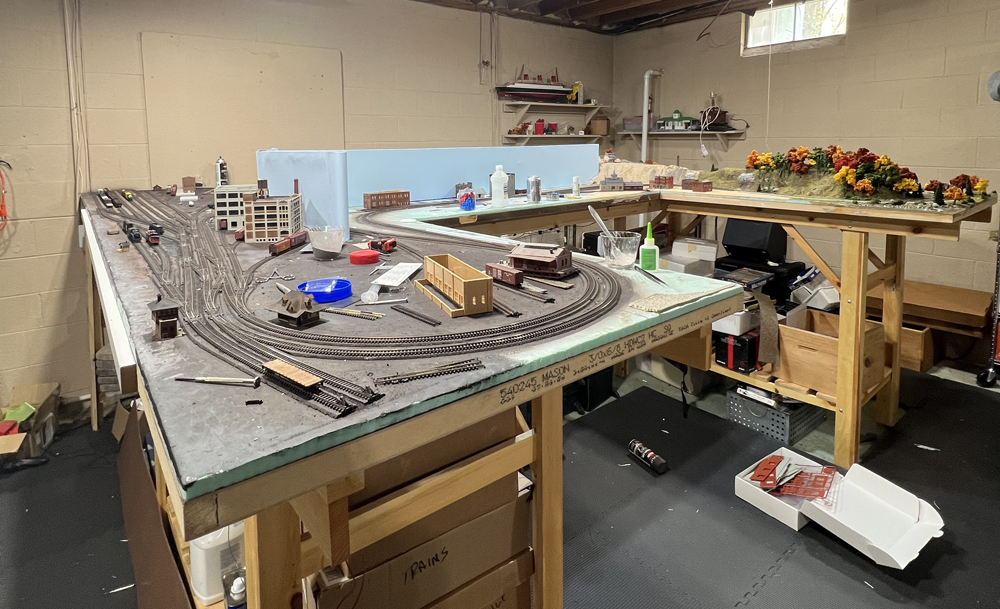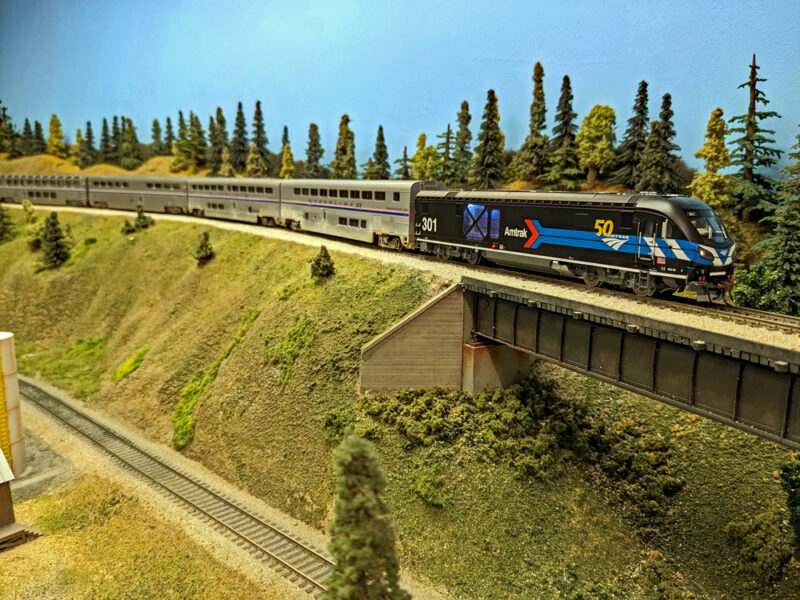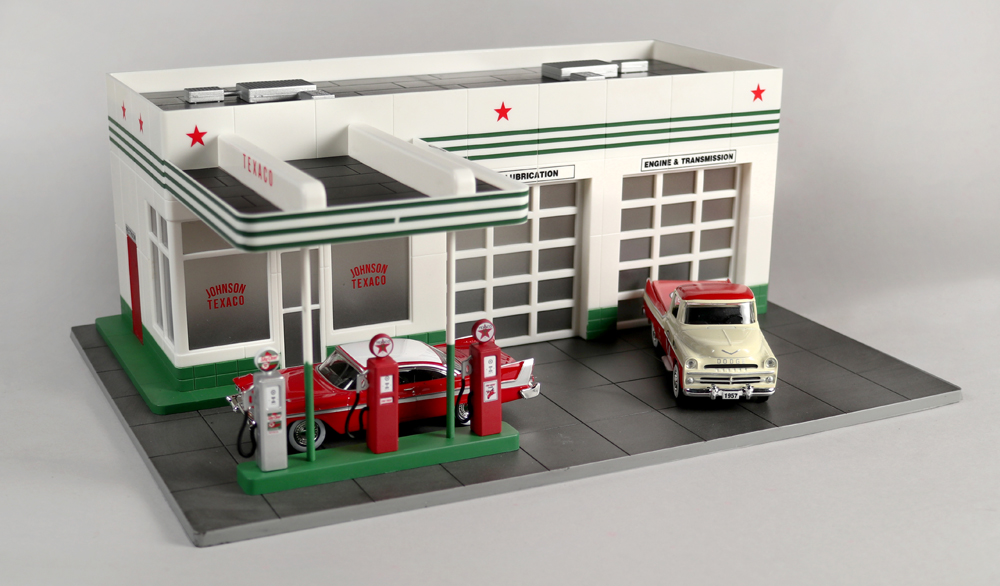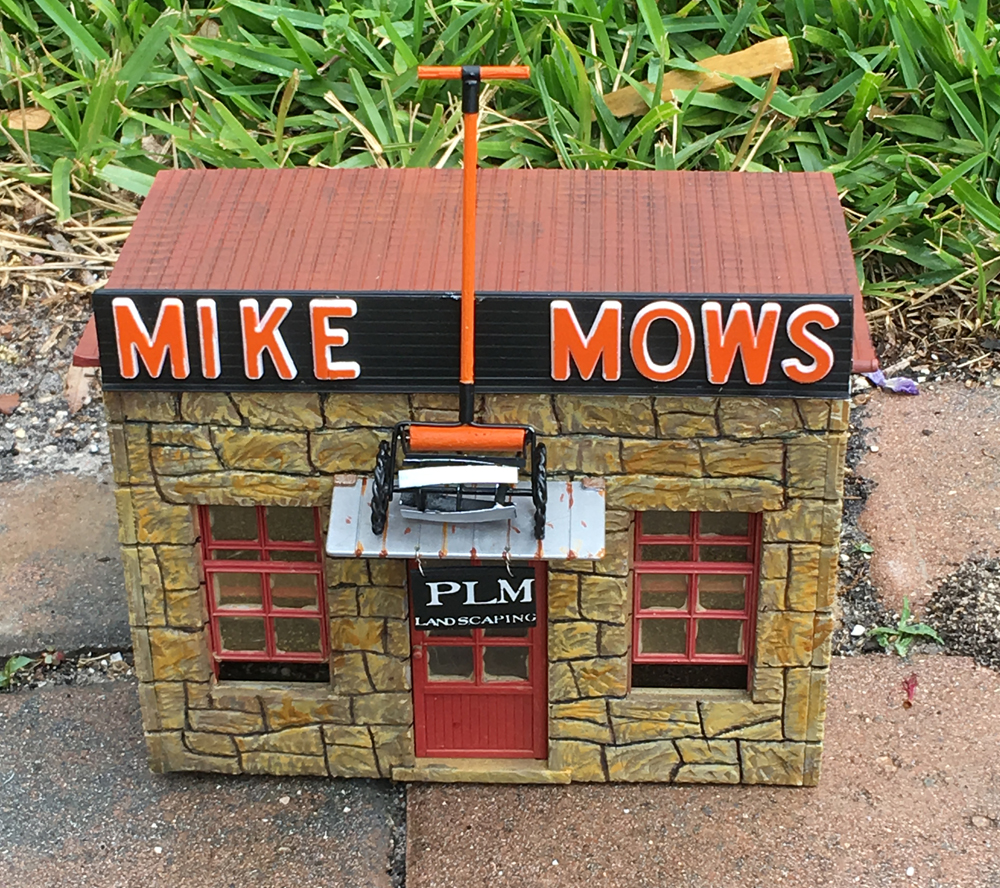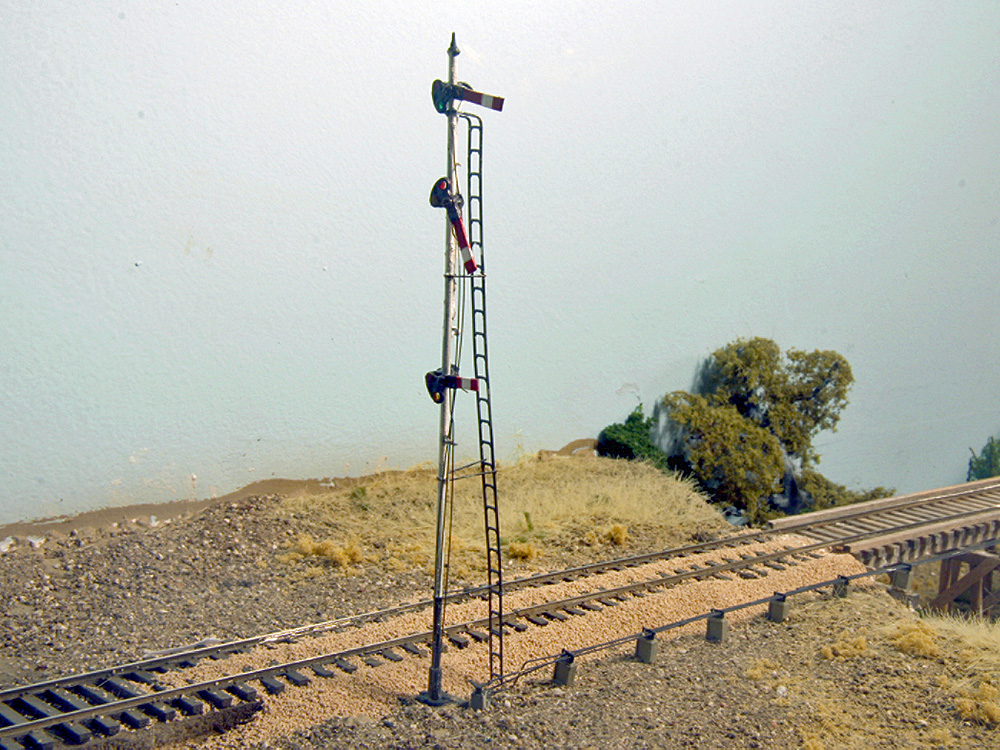
Unless you model a short line or branch line that owns only one locomotive, your layout probably needs some kind of model railroad signals. Signals are used to convey information to an engineer about the block of track ahead: whether it’s safe to enter, whether it’s occupied by another train, and how fast it can be safely traveled. Signals can also be used to control traffic through an interlocking or yard, indicate the direction a turnout is thrown, tell an engineer there’s a train order waiting for him at a station, indicate there are passengers waiting at a flag stop, and more.
Model railroad signals not only make a layout look more realistic, but if they work can also improve realistic operations. Working signals let engineers following their trains around a layout operate their trains like the real thing. Building and wiring model railroad signals for operation may sound daunting, but it doesn’t have to be. Here are the most common kinds of signals used on model railroads, including links to articles on how to build them.
Types of model railroad signals
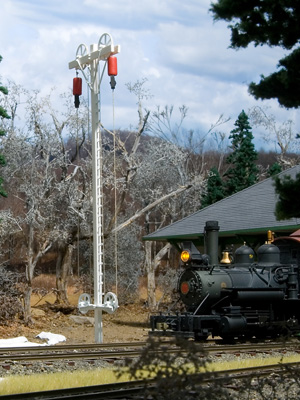
Ball signals were a very early development on the railroads. Since the signals had to be set manually, they were most often positioned at stations, interlocking towers, or other manned locations. Their aspects and meanings varied from railroad to railroad. Most often they were used not as block signals, but to control train movements through crossings, interchanges, and interlockings. Read Lou Sassi’s about building a ball signal in the August 2009 Model Railroader.
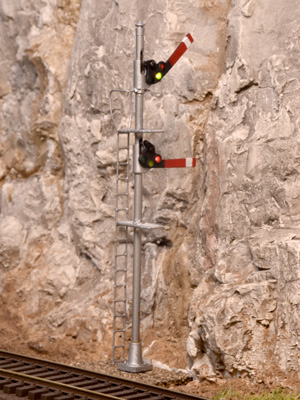
Semaphore signals came into use on the railroads in the 1860s, and some remain in use today. The aspects are conveyed by the position of the arm or blade. Vertical means “proceed,” equivalent to a green light on a color-light signal; horizontal means “stop,” equivalent to a red light; and diagonal means “caution,” as a yellow light. At first, semaphores pivoted through the “lower quadrant,” with the blade hanging down signifying “proceed.” Blades had to be counterweighted so they would pivot to “stop” if the mechanism failed. In 1908, the upper quadrant semaphore, in which a blade pointing up meant “proceed,” became the standard.
Early in their development, semaphore blades were fitted with colored lenses that moved in front of a light source to provide visibility at night. The color of the blade was usually chosen for maximum visibility; red, yellow, and white are common. The shape of the end of the blade also conveyed information; a pointed blade signified a permissive signal, a square end was absolute, and a two-pointed fish-tail shape was used for distant signals. Read Dave Mashino’s article “How to scratchbuild a semaphore” in our December 2021 issue.
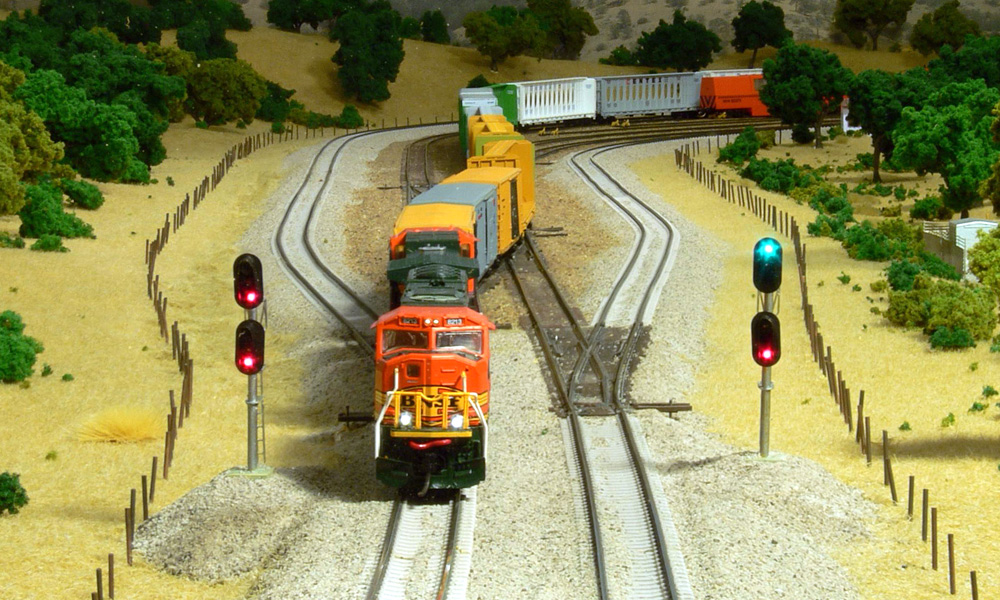
Color-light signals are the three-light signal heads we’re all familiar with. They resemble traffic lights, with red, yellow, and green lights oriented vertically. Though one signal head is enough to convey “Proceed,” “Approach,” or “Stop,” some signals have two or three signal heads to convey specialized aspects like “Proceed Normal,” “Approach Slow,” “Stop and Proceed,” and more.
Color-light signals are designated as Absolute or Permissive by a placard on the mast. Permissive signals, with a number or the letter “I” on the placard, allow a train to proceed slowly after stopping at a red signal. Absolute signals either have a placard with the letter “A” or no placard at all. Trains must stop at a red on an absolute signal and remain until given explicit clearance to proceed.
In our August 2013 issue, N scale modeler Jim Reising wrote about how to assemble and wire brass signal kits.
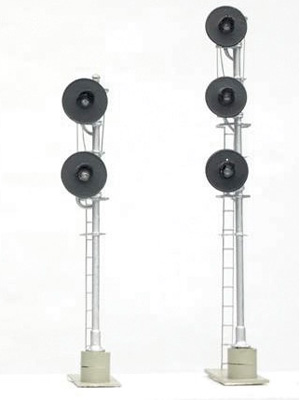
Searchlight signals have one light per signal head. On the prototype, these change colors by rotating colored lenses in front of the light. On our models, they are usually illuminated by tri-color LEDs that can display red, yellow, or green depending on the current applied. Like color-light signals, searchlights can have one or multiple heads to display more aspects.
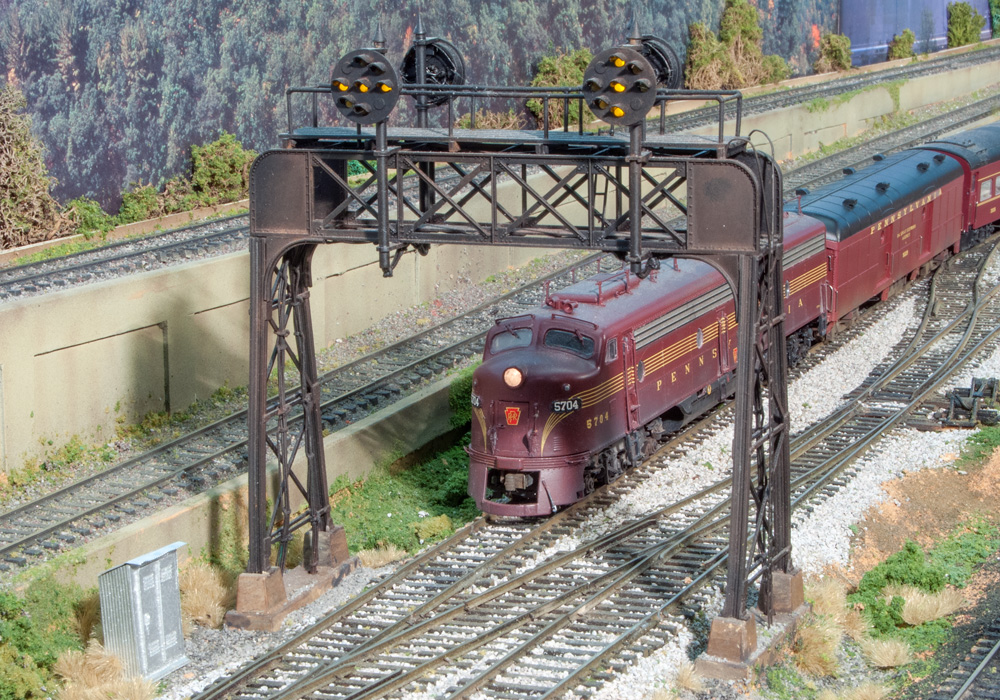
Position-light signals were invented by the Pennsylvania RR in 1915 and adopted by several other Eastern roads including the Norfolk & Western, Long Island Rail Road, and Lehigh Valley. These large, circular signal heads bore seven single-color lights (usually yellow) arranged so they could be illuminated in vertical, horizontal, or diagonal rows of three, corresponding to the aspects of semaphores. Though more lights per signal head meant more power use and more maintenance costs, the position-light signal was an improvement in safety since the aspect could still be read even if one of the bulbs burned out.
The Baltimore & Ohio took this design a step further with the color-position light. These omitted the central bulb of the position-light signal head, orienting two green lights on the vertical, two yellows on the diagonal, and two reds horizontally.
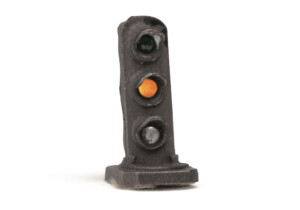
Dwarf signals control movements in yards, industrial spurs, and passing sidings, rather than on main lines. Since trains in these settings are already moving at very low speeds, these signals don’t have to be visible from a distance, and so can be mounted at ground level. Dwarf signals can be of almost any type listed above (except ball signals); there are dwarf searchlight signals, dwarf color-light signals, dwarf position-light signals, even dwarf semaphores!
Reading model railroad signals
To learn how to read model railroad signals, check out part 1 of this article.






